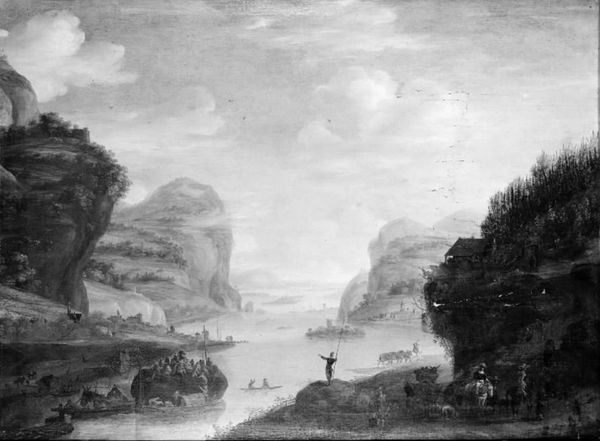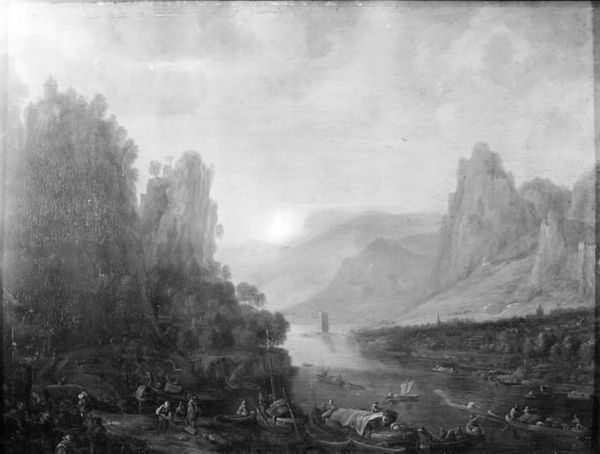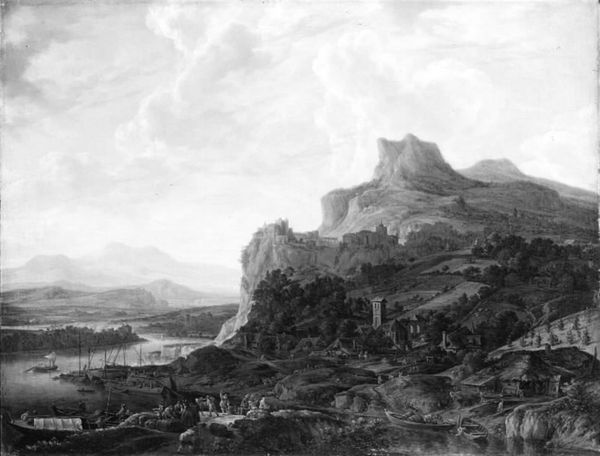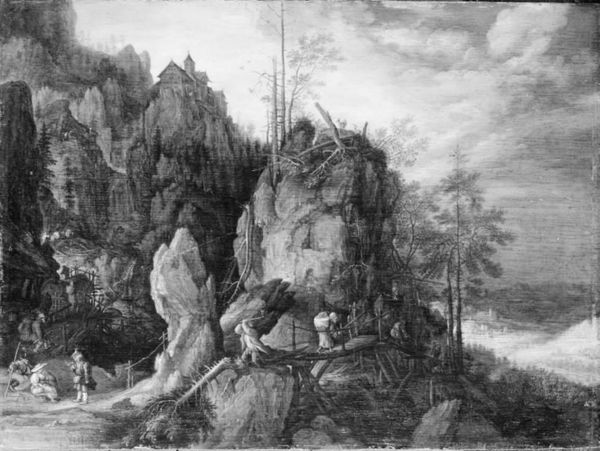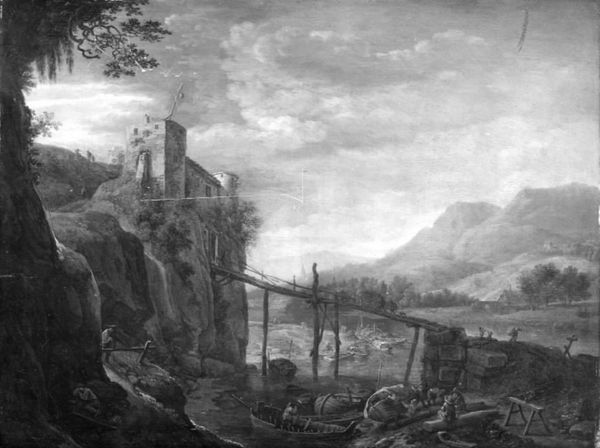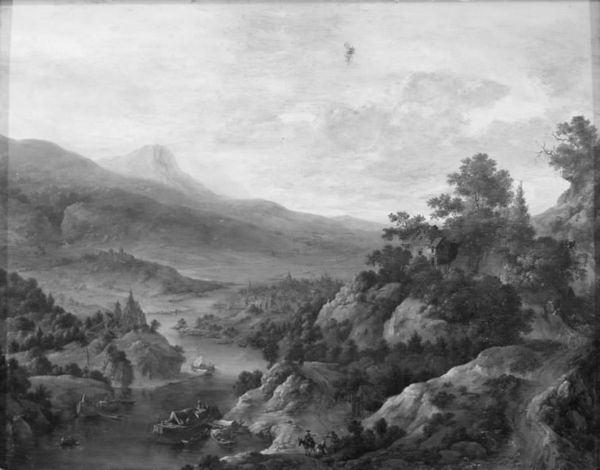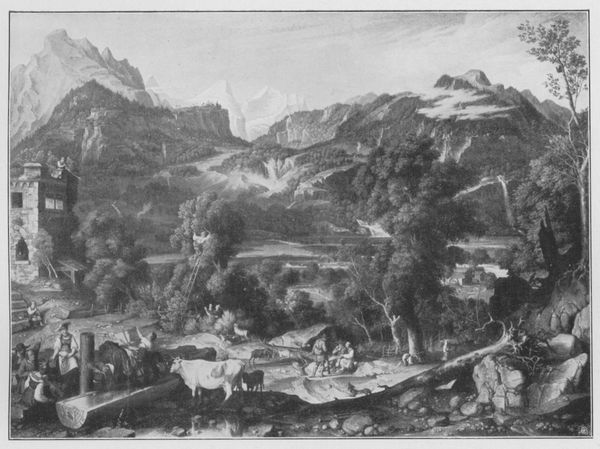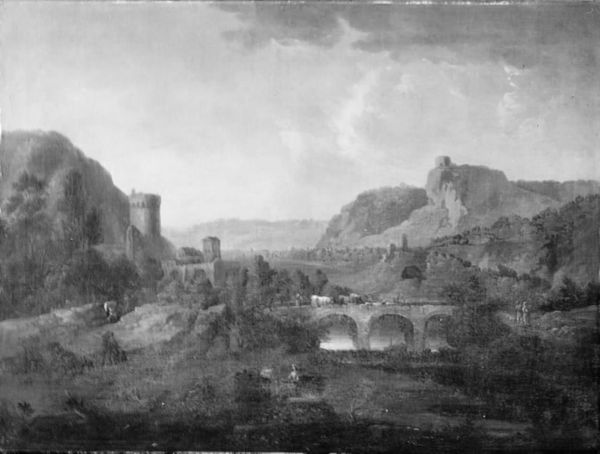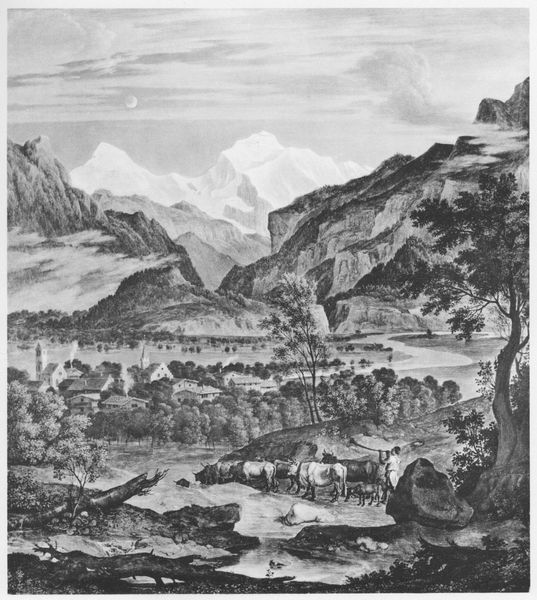
painting, mural
#
painting
#
landscape
#
mural
#
realism
Dimensions: 70.5 cm (height) x 86 cm (width) (Netto)
Editor: This is "River Landscape," attributed to an anonymous artist and created sometime between 1624 and 1848. It's a painting, perhaps even a mural. It feels very much like a constructed reality rather than a documentary one, almost a stage set, especially because of the large, central mountain in the distance. What do you see in this piece, that perhaps I am overlooking? Curator: That observation about constructed realities is a crucial starting point. Consider the period – early modern Europe. Landscapes weren’t just passive reflections of nature. They were powerful assertions of ownership, national identity, and social hierarchy. The dramatic mountain, while seemingly ‘real’, is staged. Is it perhaps intended to dominate, subjugate? To emphasize human insignificance against a grand, divinely ordained backdrop? Editor: I see that! So, the artist isn't just painting a pretty picture, but also subtly conveying messages about power and the role of humanity. Do the figures add anything? Curator: Absolutely! Look at the figures in the foreground. Are they engaged in labor? Are they wealthy merchants? What narratives might they be subtly enacting regarding the burgeoning economic and social changes of the period? Are we, as viewers, invited to identify with them or observe from a detached, privileged perspective? The lack of attribution can suggest an appropriation of the style. Editor: That's fascinating! I was so focused on the landscape itself that I hadn't considered the figures as active participants in this narrative of power. Thinking about this piece in terms of the social hierarchy opens up a whole new perspective. Curator: Indeed. The landscape becomes a stage upon which the drama of early modern life unfolds. This helps us better contextualize the work with respect to how landscapes operated within intersectional social, political and economic narratives. Editor: This has been incredibly helpful in understanding "River Landscape" beyond its surface aesthetics. Thanks! Curator: My pleasure! Remember, art always speaks volumes if we know how to listen beyond the initial visuals.
Comments
No comments
Be the first to comment and join the conversation on the ultimate creative platform.
